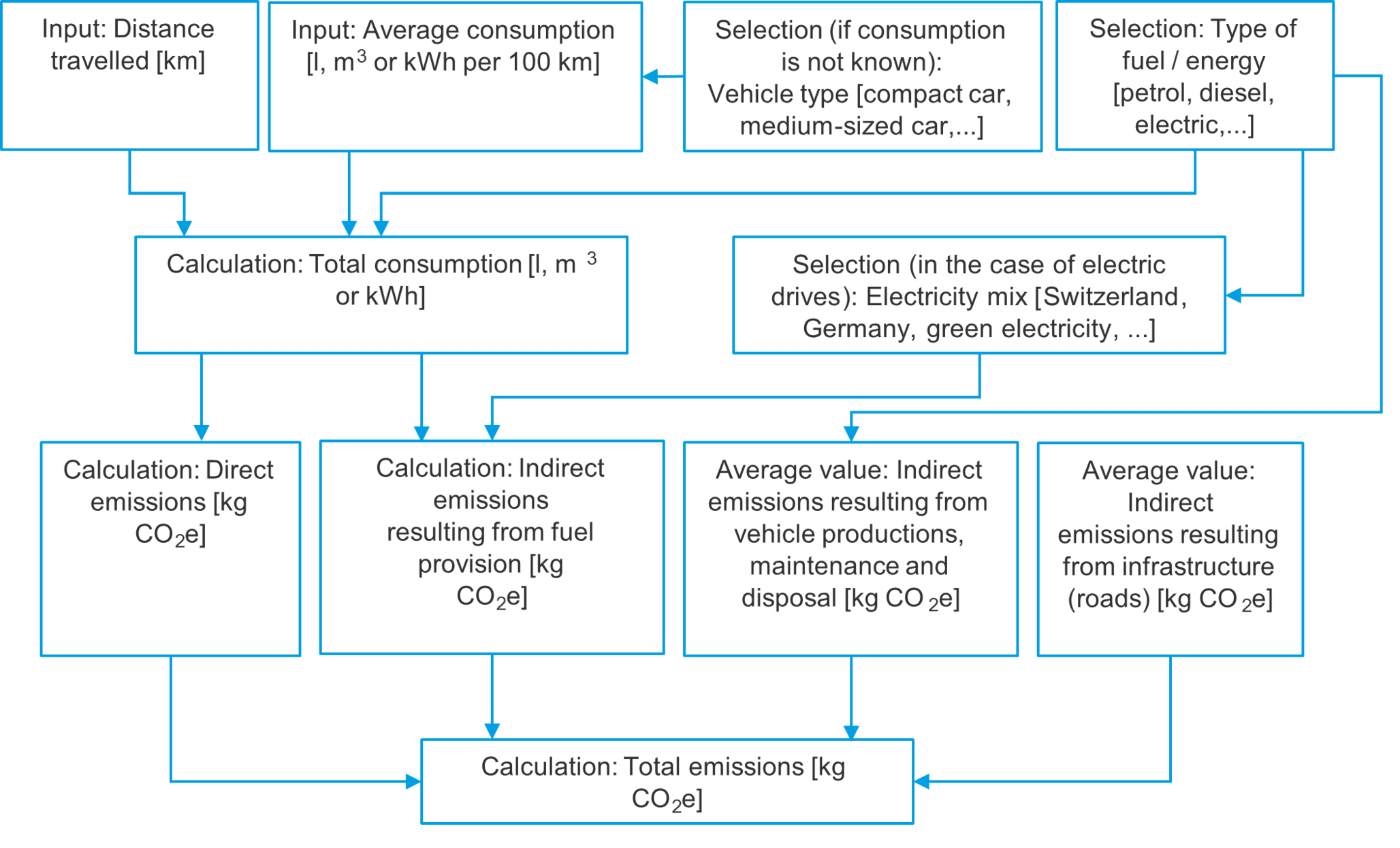Calculation principles - Car Calculator
The car emissions calculator quantifies the direct and indirect emissions per vehicle for a given distance travelled. The calculated emissions are based on the ecoinvent life cycle assessment database and various mobility statistics.
The aim is to provide users with a simple application, through which they can input a few details to specify their car journey and obtain a calculated result to raise awareness. They can also make a corresponding climate protection contribution for the emissions calculated, which is used to finance myclimate climate protection projects. The resulting emissions correspond to the amount of CO2 equivalents that can be reduced in myclimate carbon offset projects.
myclimate aims to fully map the emissions caused and includes not only direct emissions during the car journey but also indirect emissions. These arise during the production, maintenance and disposal of vehicles, during the processing of fuel or electricity, and in the provision of infrastructure (roads, petrol stations, etc.)
2. Methodology
General information
The resulting greenhouse gas balance includes all relevant emissions generated during a car journey as well as the indirect greenhouse gas emissions that occur during the car’s entire life cycle.
The basis for the calculation of the climate balance is the ecoinvent database (Version 3.6), using the IPCC 2013 (Intergovernmental Panel on Climate Change) evaluation method. This method considers the global warming potential over a 100-year time horizon (GWP 100a).
The climate impact is indicated with the unit “kg CO2e”, i.e. “kilogram CO2 equivalents”, which adds up the effects of all greenhouse gases. The most common greenhouse gas is carbon dioxide (CO2), which is produced when fossil fuels are burned. Besides CO2, other greenhouse gases such as methane (CH4) and nitrous oxide (N2O) are emitted during numerous processes.
System limit
myclimate aims to map the resulting greenhouse gas emissions as fully as possible. This includes not only direct emissions during the journey but also indirect emissions from upstream and downstream processes.
The upstream processes include the processing and provision of fuel or electricity, as well as the production of the vehicle. The downstream processes include the regular maintenance of the vehicle and its disposal, as well as the provision of the necessary infrastructure (roads, petrol stations, etc.).
Calculation methodology
The car calculator assesses the greenhouse gas emissions based on the fuel or electricity consumption of the vehicle during the corresponding journey. For this reason, the distance travelled and the car’s average fuel consumption are recorded, as is fuel or energy type. This information can be used to calculate the total consumption and then the resulting emissions. If the vehicle’s average consumption is not known, a size category can be selected alternatively. A stored average consumption of the corresponding category is then used as an approximation.
This information is then used to calculate the emissions produced during the journey as well as the emissions produced by the processing and provision of the fuel or electricity. However, the other upstream and downstream processes occur once and at different times, so a different methodology is used for these:
The emissions resulting from vehicle production, maintenance and disposal are calculated based on a standard passenger car of the respective category and broken down into the fuel or energy consumption using an average lifetime mileage (emissions per litre or kilowatt hour). A statistical mean value is used for emissions resulting from road infrastructure, which is also converted to fuel or energy consumption.
Please note that emissions are calculated per vehicle kilometre (vkm) and not per passenger kilometre (pkm), for which an average utilisation rate would have to be assumed.
Since statistical values and in some cases well-founded assumptions are used in the calculations, an uncertainty margin of 5% is added to the emissions.
For a specific and detailed analysis, evaluations and calculations with an adapted data basis, please contact info@myclimate.org. myclimate will be happy to support you within the framework of a service order.
3. Data sources
- ecoinvent database version 3.6, 2019.
- Mobitool factors v2.0.2, 2017.
